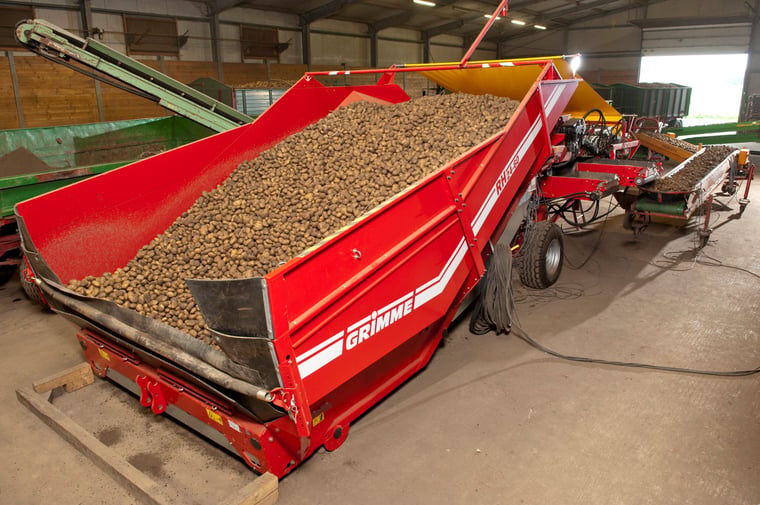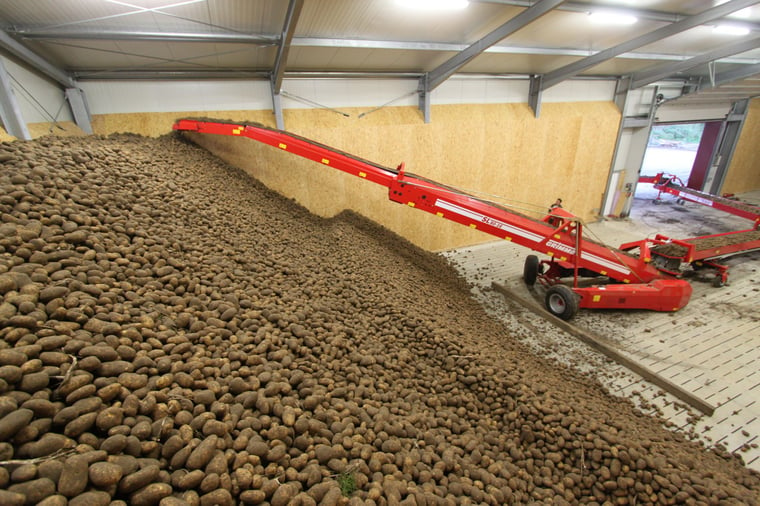
In potato production environments without or with limited mechanization, potatoes are picked up by hand and carried in baskets or bags to the place where they are stored in bulk. In semi-mechanized settings where part of the operations is manual, such as planting and hoeing, the tubers for trade, long-distance transport and/or long-term storage or processing are picked up by hand and handled in bags.
In fully mechanized potato settings, the tubers are stored in bulk or in pallet boxes of say 1 or 1.5 ton. The fully automatic harvester discharges the lifted tubers directly into a trailer that continuously accompanies the harvester or is provided with a hopper of 3-15 ton that is emptied periodically into a trailer. The trailer of 10-30 ton capacity transports the tubers to the store where it is emptied into a feed hopper with a capacity of 10-30 tons acting as a buffer. The hopper exit is provided with a set of cleaning fluted rollers with adjustable distances to remove soil and clods.
Manually or remotely controlled speeds and angles
Next, where growers opt for a first grading operation into two sizes (the grades are stored in different compartments) a conveyor belt empties them in swinging a telescopic bulk piler. Its movements assure that while depositing no soil cones build up that hamper an even flow of ventilation air and that the dropping height never exceeds more than a certain distance say 1 meter. All machine speeds and angles are set manually or by remote control, whereby the store keeper operates a handheld device. To reduce the height in drop, some conveyer belts, certainly those used to fill boxes, are provided with a nodding tip. When stored in pallet boxes or big bags the feed hopper empties into a conveyor belt connected to a box filler (dipping elevator). Alternatively, the hopper at the harvester discharges into a pallet box at the field that is transported to the store. When using big bags with a capacity of around 1 ton, a cascading mechanism is used to reduce the drop height. All systems - and there are many more than described here - consider costs, speed of operations, drop height and consequently damage to tubers and the distribution of tubers and loose soil.

The store loading line passes the following trajectory: the truck that goes between harvesting machine and store delivers the tubers to a hopper. The tubers pass a grader to remove odd sizes and adhering soil is sieved and removed by conveyor belt. Then an elevator belt (the piler or store loader) delivers the tubers to a belt that fills the storage compartment or boxes.
Want to keep reading about the potato crop and storing systems?
Our Potato handbook is a global potato university in 1 book!
Buy your copy today and get a one-year free subscription to PotatoWorld magazine.

